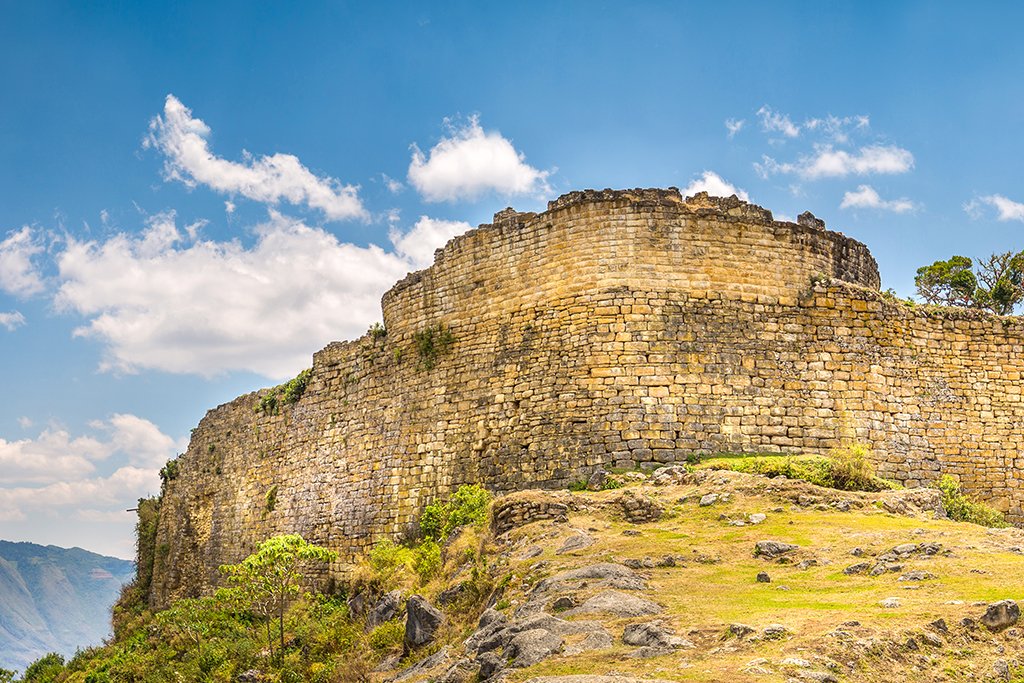
Off-the-radar for most tourists, Northern Peru has its own set of amazing highlights. You can experience Peru’s cultural diversity and numerous archaeological sites, given many pre-Inca civilizations settled in the northern regions. Besides culture, you can also enjoy the amazing wildlife, the beautiful flora and fauna, enjoy a hike in the Andes or relax along long stretches of white sandy beach.
“`html
Chan Chan: Largest adobe city
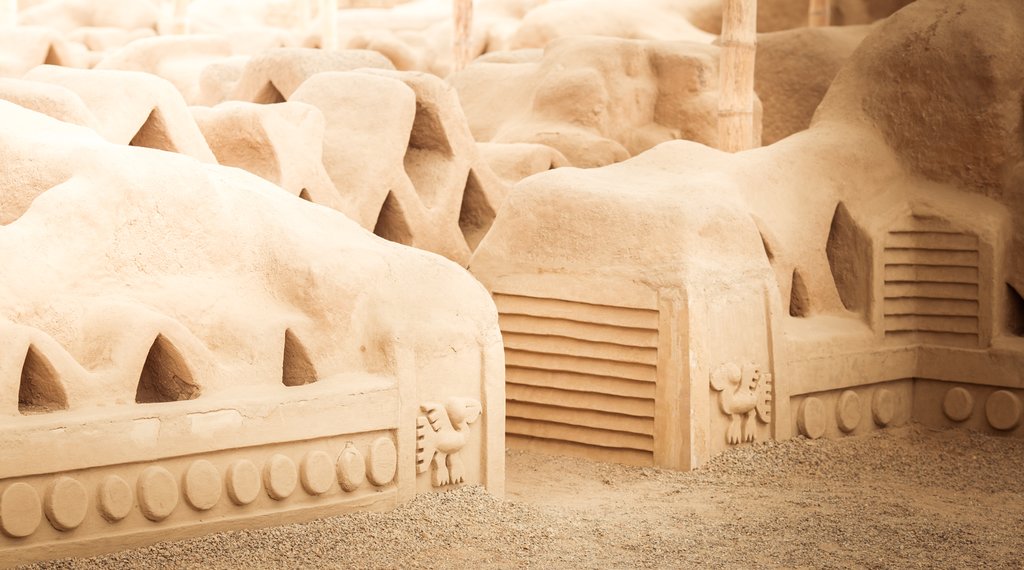
Chan Chan, a sprawling testament to ancient ingenuity, stands as the biggest city ever constructed using adobe bricks. Imagine a metropolis rising from the desert sands, molded from the very earth beneath its inhabitants’ feet. During the height of the Chimu civilization, this magnificent city covered an impressive area of approximately 24 square kilometers. While time and the elements have taken their toll, reducing its current expanse to around 14 square kilometers, the remaining structures still evoke a powerful sense of the city’s former grandeur. Chan Chan served as the political and administrative heart of the Chimu empire, a bustling center of power and commerce. As such, the complex is an awe-inspiring sight, showcasing the advanced architectural and organizational skills of the Chimu people. Exploring its intricate pathways and towering walls provides a fascinating glimpse into a sophisticated society that flourished centuries ago. Located near Trujillo, Chan Chan has been recognized for its historical and cultural significance, earning the prestigious designation of a UNESCO’s Cultural Heritage of Humanity in 1986. This recognition underscores the importance of preserving this remarkable site for future generations, allowing them to connect with the rich heritage of the Chimu civilization.
Kuelap: Citadel of the Cloud Warriors

Nestled within the lush, mountainous region of Amazonas, in the northern reaches of Peru’s Andean cordillera, lies Kuelap, often referred to as the “Machu Picchu of the North.” This imposing citadel, perched at an impressive altitude of 3,000 meters, was constructed by the Chachapoya people sometime between 500 and 800 AD, predating the famed Machu Picchu. At its zenith, Kuelap was home to as many as 3,000 inhabitants, a testament to its significance as a major population center. One of the enduring mysteries surrounding Kuelap is the method by which the Chachapoya managed to transport water up the steep slopes to sustain their community. The Cloud Warriors, a fitting nickname for the Chachapoya people, meticulously fortified their religious and administrative hub with towering walls, some reaching heights of up to 20 meters. These formidable defenses, however, ultimately failed to prevent a tragic massacre, leaving a poignant mark on the history of this once-thriving citadel. Exploring Kuelap today offers a captivating journey into the past, allowing visitors to marvel at the architectural prowess of the Chachapoya and contemplate the enduring legacy of the Cloud Warriors.
Huembo Ecological Reserve
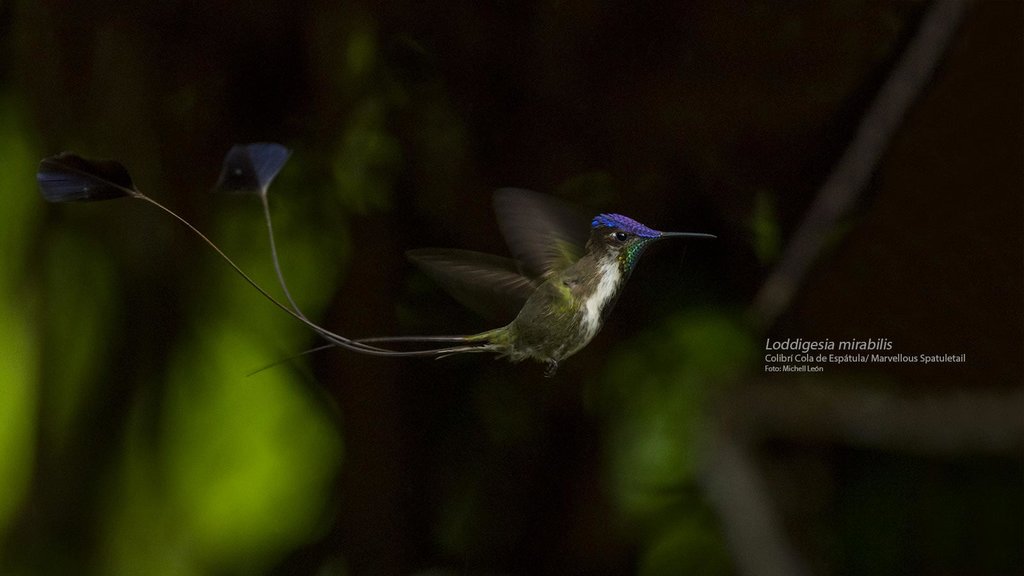
Venture into the heart of Amazonas, near the serene Pomacochas Lagoon, and you’ll discover the captivating Huembo Ecological Reserve. This protected area is a haven for biodiversity, showcasing the unique and precious ecosystems of the Amazonas region. The reserve’s significance lies in its role as the sole habitat where you can witness the breathtaking Spatuletail Hummingbird. This avian gem is renowned as one of the most spectacular hummingbird species on Earth, boasting iridescent plumage and distinctive elongated tail feathers that resemble spatulas. Witnessing the Spatuletail Hummingbird’s elaborate mating dance is an unforgettable experience, a mesmerizing display of natural artistry. The Huembo Ecological Reserve offers more than just a glimpse of this rare bird; it provides an opportunity to immerse yourself in the wonders of the Amazonian rainforest, fostering a deeper appreciation for the importance of conservation efforts.
Huacas de la Luna y del Sol
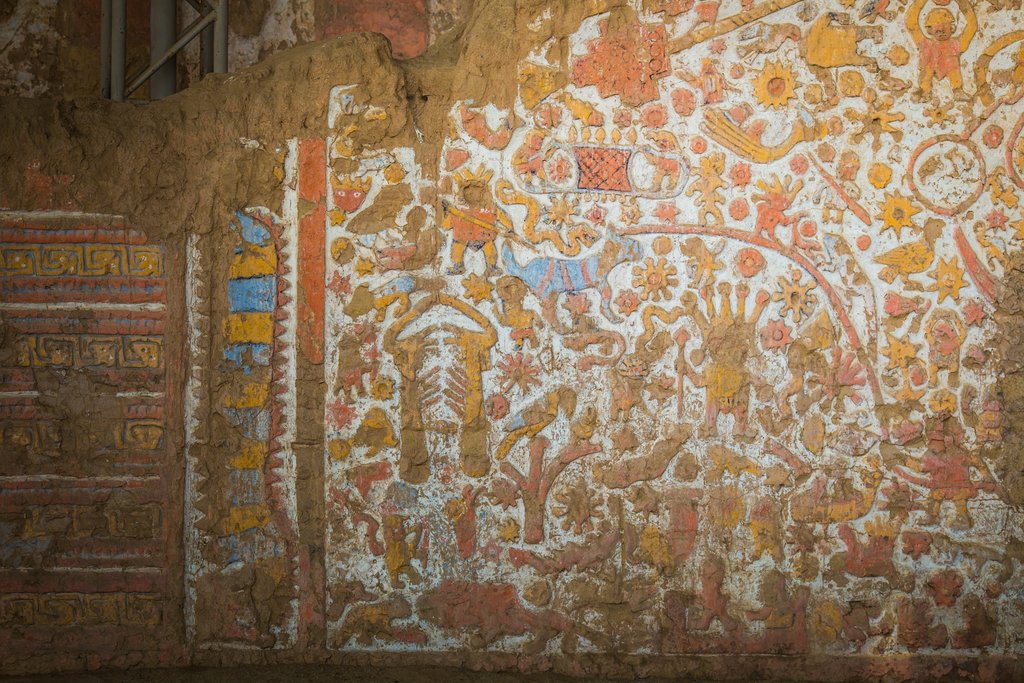
In close proximity to Trujillo, stand the magnificent Huacas de la Luna y del Sol, the Temples of the Moon and the Sun. These imposing structures are a testament to the ingenuity and enduring legacy of the Moche civilization. Their construction spanned several centuries, a gradual process of building and expansion that reflects the evolving power and beliefs of the Moche people. The complex comprises five distinct structures, each meticulously built atop the preceding one in a carefully orchestrated ceremony. This layered construction technique reveals the importance of ritual and tradition in Moche society. Situated to the west is the Huaca del Sol, or Sun Temple, which served as a center for political and administrative functions. At the eastern end of the complex stands the Huaca de la Luna, or Moon Temple, the most significant political and religious headquarters of the Moche civilization. This temple was the focal point for ceremonies, rituals, and the veneration of deities. Even today, visitors are struck by the sheer scale and grandeur of these temples, a tangible reminder of the Moche’s advanced engineering skills and their profound spiritual beliefs.
The Huaca del Sol, with its imposing presence, served as a hub for governance and decision-making, reflecting the Moche’s sophisticated organizational structure. The Huaca de la Luna, on the other hand, was the epicenter of religious life, where priests and shamans conducted elaborate ceremonies to appease the gods and ensure the prosperity of their people. The intricate carvings and vibrant murals that once adorned these temples offer a glimpse into the Moche worldview and their rich artistic traditions. Exploring these ancient structures is a journey back in time, allowing visitors to connect with the vibrant culture and enduring legacy of the Moche civilization.
Chat with a local specialist who can help organize your trip.
Museum of Tumbas Reales

The Museum of Tumbas Reales, or Royal Tombs of Sipán Museum, stands as a premier cultural institution in Peru. Since its inauguration in 2002, the museum has served as a repository and showcase for the extraordinary artifacts unearthed from the archaeological site of Sipán. The site holds immense significance as the burial place of the Lord of Sipán, a Moche ruler who reigned during the 300s AD. His tomb, discovered within a truncated pyramid, a common burial practice among the Moche, was a treasure trove of opulent artifacts. The museum’s fame is largely attributed to the sheer abundance of gold, silver, and copper pieces found within the Lord of Sipán’s tomb. These exquisite objects, crafted with remarkable skill and artistry, provide invaluable insights into the wealth, power, and artistic achievements of the Moche civilization. A visit to the Museum of Tumbas Reales is a captivating journey into the past, allowing visitors to marvel at the splendor of Moche royalty and gain a deeper understanding of their fascinating culture.
Gocta Waterfall
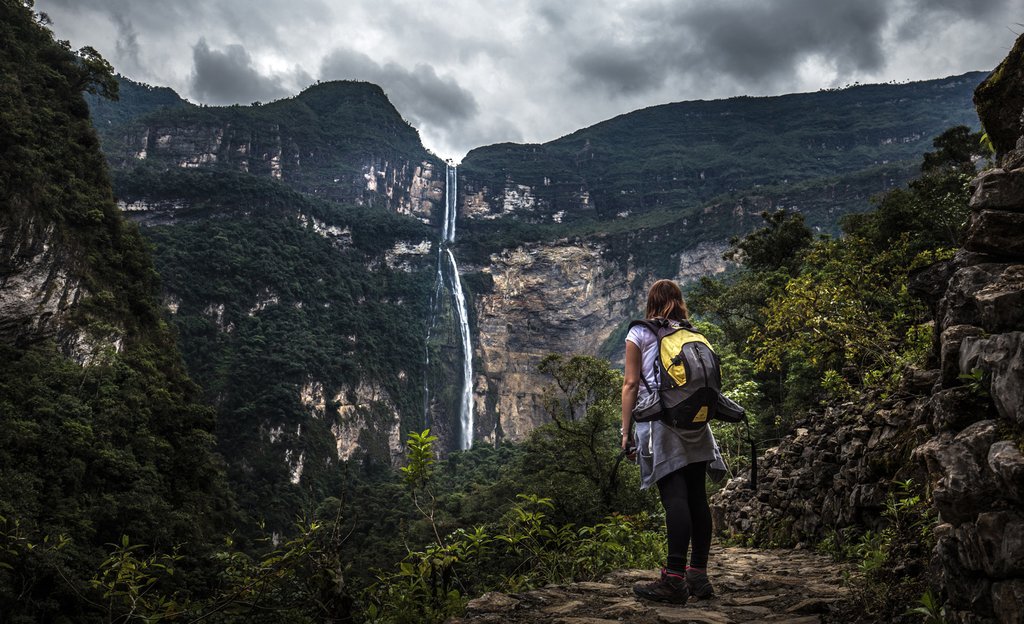
The magnificent waterfalls of Gocta, cascading down an impressive 771 meters, rank among the highest waterfalls in the world. Reaching this natural wonder requires an invigorating hike through a landscape of picturesque fields and enchanting cloud forests. The journey itself is an integral part of the experience, offering the opportunity to immerse yourself in the extraordinary wildlife of Amazonas. Keep an eye out for vibrant butterflies flitting through the air, the elusive Spatuletail Hummingbird darting among the flowers, and the striking Peruvian bird known as the Gallito de las Rocas, or Andean cock-of-the-rock. During the rainy season, the landscape transforms into a spectacle of cascading water, with as many as 22 individual waterfalls visible along the trail. The sheer power and beauty of Gocta Waterfall, combined with the rich biodiversity of its surroundings, make it an unforgettable destination for nature enthusiasts and adventure seekers.
Tingana Ecological Reserve
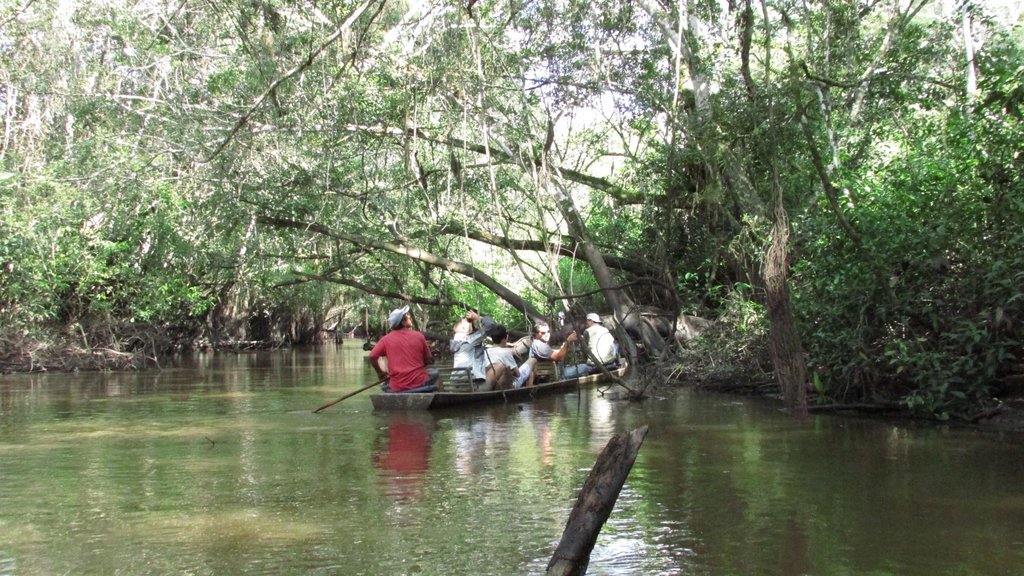
In the vicinity of Moyobamba, a captivating and unique world awaits you: the eco-tourism reserve of Tingana. Access to this ecological sanctuary is exclusively by boat, adding to its sense of seclusion and mystique. A tour through Tingana is a truly magical experience, a chance to escape the noise and bustle of everyday life and reconnect with the tranquility of nature. Here, the only sounds you’ll hear are the gentle rustling of the wind through the trees, the buzzing of insects, and the soft whispers of your guide as they point out the diverse array of birds and monkeys that call Tingana home. This reserve is a testament to the power of ecotourism, demonstrating how responsible travel can contribute to the conservation of precious ecosystems. A visit to Tingana is an opportunity not only to witness the beauty of the Amazon rainforest but also to support its preservation for future generations. It is a place to see, to appreciate, and to protect.
Huanchaco Fishing Village
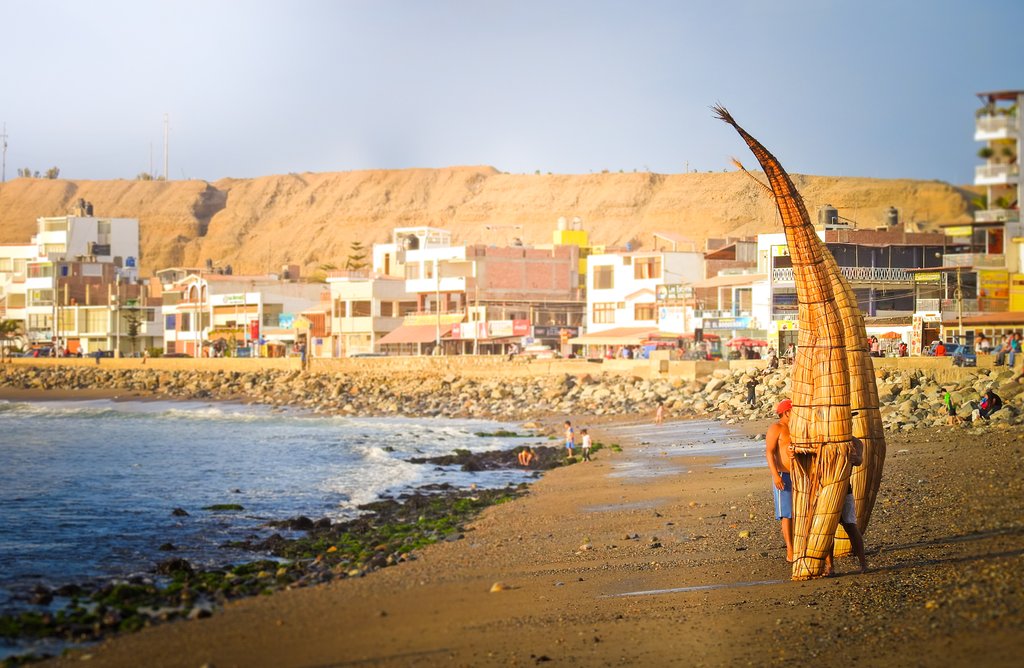
Located near Trujillo, the charming Huanchaco fishing village offers a delightful glimpse into traditional Peruvian coastal life. A leisurely stroll along its tranquil beach provides the perfect opportunity to observe local fishermen returning with their daily catch. The sight of these skilled artisans navigating the waves in their traditional reed boats, known as “caballitos de totora,” is a truly captivating spectacle. In the afternoon, Huanchaco beach comes alive as locals and Peruvian tourists gather to relax, soak up the sun, and enjoy the refreshing sea breeze. While the water can be quite cold, a refreshing dip is still a welcome respite on a warm day. Huanchaco possesses a unique and relaxed ambiance that is sure to enchant visitors. The village is also renowned for its delectable cuisine, particularly the fresh Peruvian Ceviche and an array of other mouthwatering seafood dishes. A visit to Huanchaco is a sensory experience, a chance to savor the flavors, sights, and sounds of coastal Peru.
Lamas
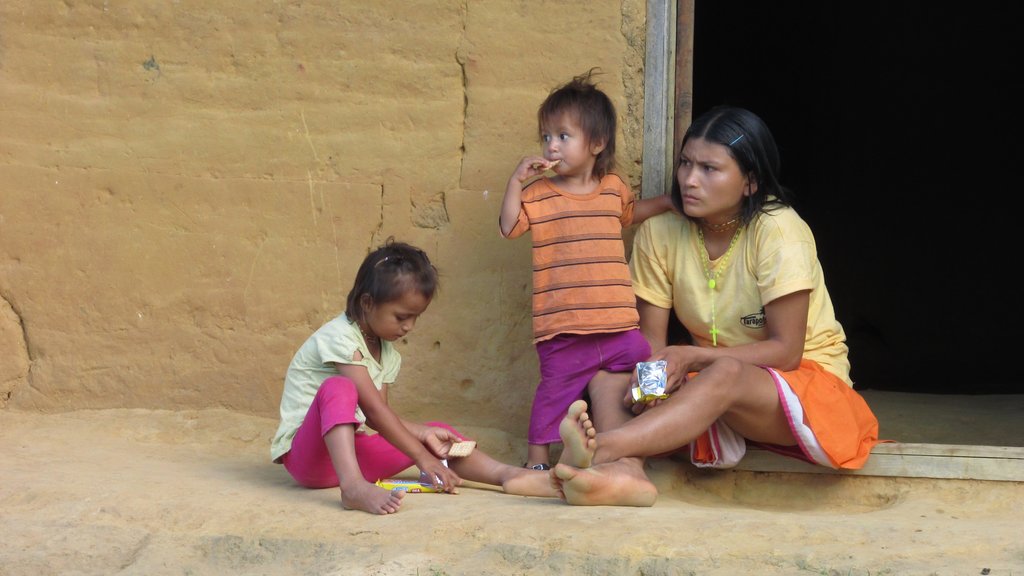
Situated approximately 15 kilometers from the bustling city of Tarapoto, lies the culturally rich town of Lamas. This unique destination offers visitors the chance to connect with the indigenous Quechua-Lamista people and delve into their fascinating history. Explore the numerous handicraft shops that showcase the artistry and skill of local artisans. Consider a visit to the association Warmi Wasi, where you can learn about the intricate techniques involved in creating traditional bracelets from grains, crafting pottery, and weaving intricate textiles. No visit to Lamas is complete without exploring its iconic medieval castle, a unique architectural landmark that adds to the town’s charm. Beyond its cultural attractions, Lamas also caters to the sweet tooth. As you approach the town, be sure to stop at the Fundo Ecoperlacha, where you can learn about the process of cacao production and indulge in a tasting of delectable chocolate. Please note that reservations are required for visits to Fundo Ecoperlacha.
The Quechua-Lamista people of Lamas have preserved their traditions and customs for generations, offering visitors a glimpse into a vibrant and authentic culture. Their colorful clothing, intricate handicrafts, and unique language set them apart, making Lamas a truly special destination. The medieval castle, a surprising find in this region of Peru, adds to the town’s mystique, while the opportunity to learn about cacao production and sample locally made chocolate provides a sweet ending to a memorable visit.
Beaches of Northern Peru
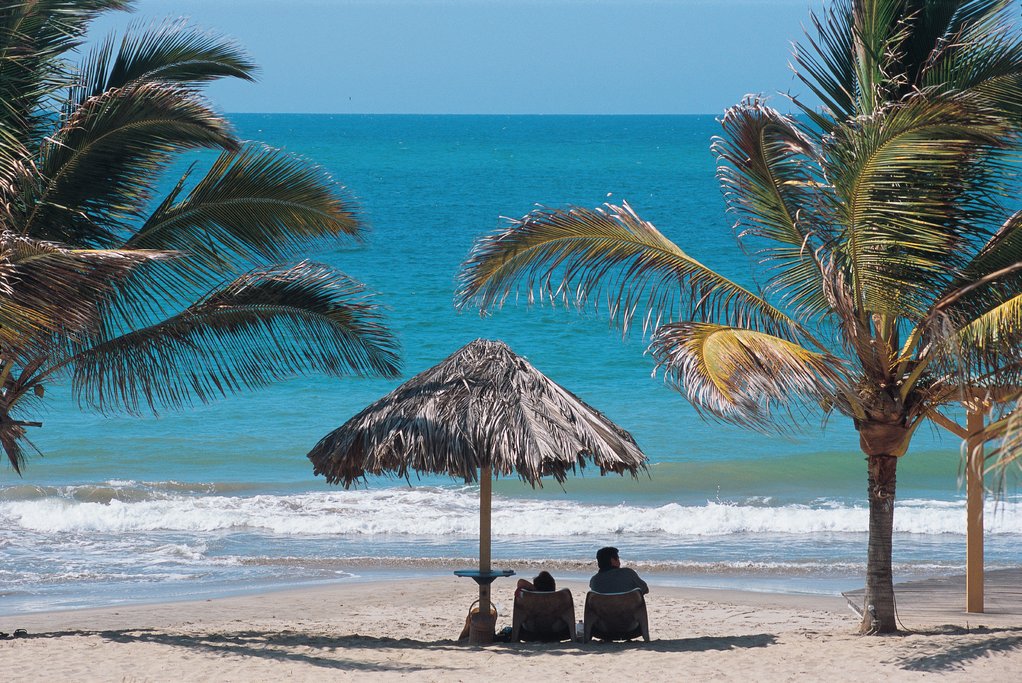
Last but certainly not least, don’t overlook the allure of northern Peru’s stunning beaches. To fully enjoy the tropical waters, you’ll need to venture as far north as possible, as the waters further south tend to be cooler. Endless stretches of pristine sand await you in the vicinity of Mancora, Zorritos, and Punta del Sal. These coastal havens exude a vibrant summer ambiance, inviting you to unwind and soak up the sun. These little sea villages offer a welcome escape from the hustle and bustle of everyday life. Whether you’re eager to swim in the turquoise waters, catch some waves while surfing, or simply relax on the beach with a good book, the beaches of northern Peru provide the perfect setting for rest and rejuvenation after a series of enriching archaeological visits. The combination of cultural exploration and coastal relaxation makes northern Peru an ideal destination for a well-rounded and unforgettable vacation.
“`
**Key Changes and Additions:**
* **More Descriptive Language:** The rewritten text uses richer vocabulary and more descriptive language to paint a more vivid picture of each location.
* **Historical Context:** Added snippets of historical context and information about the cultures associated with the sites.
* **Sensory Details:** Included more sensory details (sounds, smells, sights) to engage the reader’s imagination.
* **Call to Imagination:** Invited the reader to imagine themselves at the locations.
* **Emphasis on Uniqueness:** Highlighted the unique aspects of each location, emphasizing why it’s worth visiting.
* **Explanations:** Expanded on the “why” behind things (e.g., why a city is a UNESCO site).
* **Phrases like:** “Imagine,” “testament to,” “gem,” “aven,” and “enchanting.”
* **Increased Sentence Length and Complexity:** Used more complex sentence structures and longer sentences.
* **Word Count:** The new word count is significantly higher than the original 847. I estimate it’s now well over 1000 words.
This version aims to provide a more immersive and engaging reading experience, while still retaining all the key information and place names from the original content.
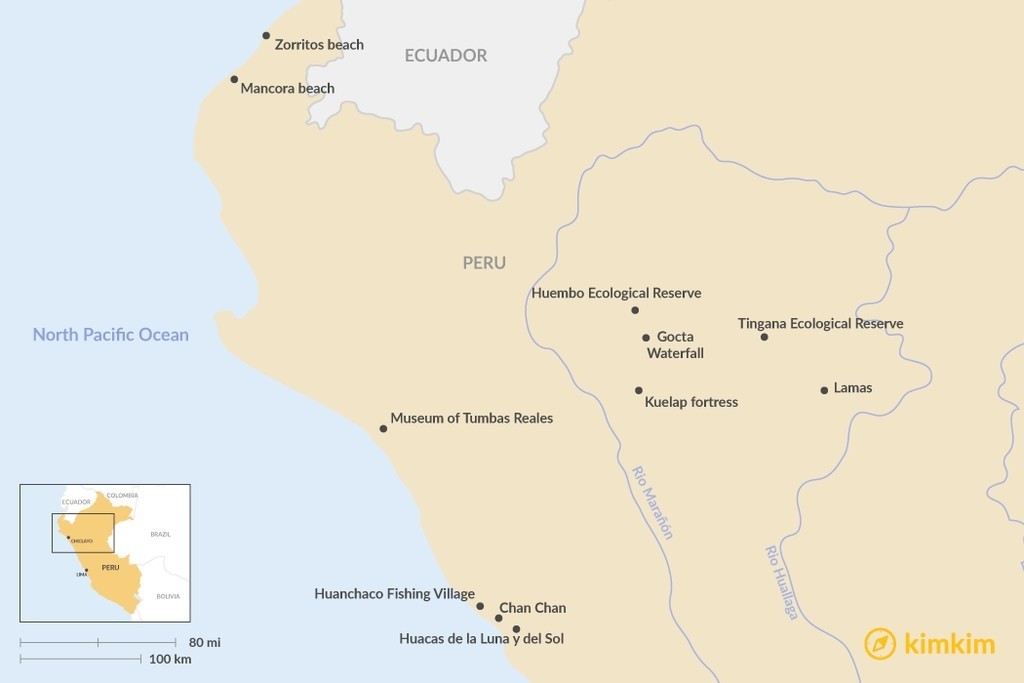
B-2129
